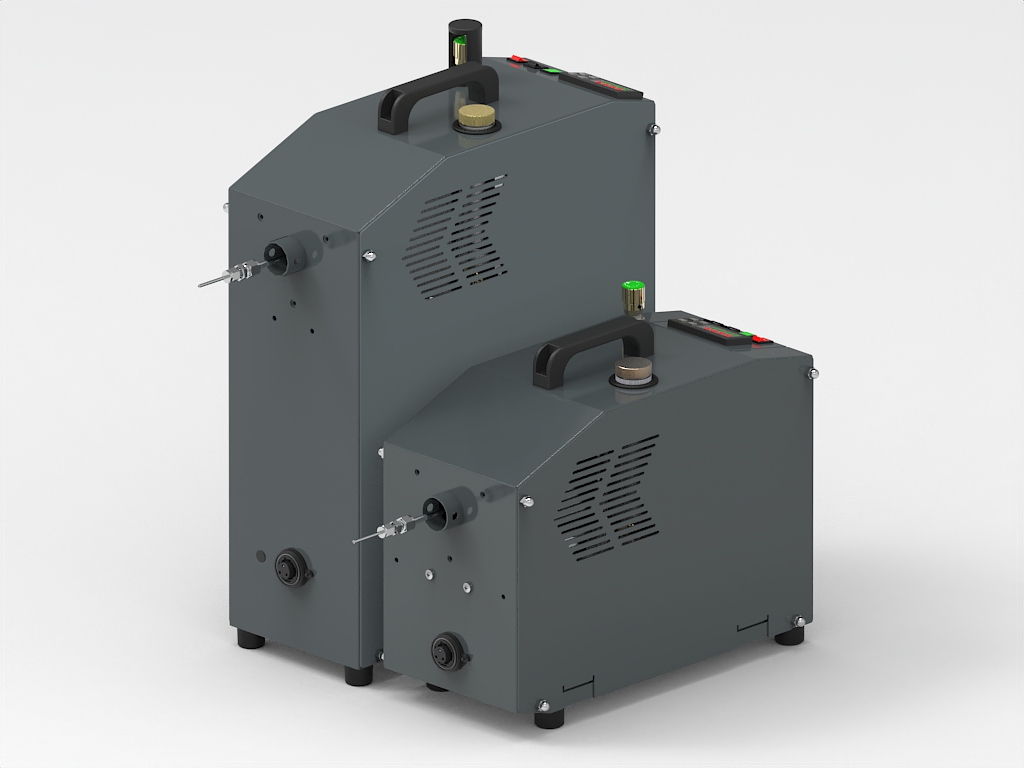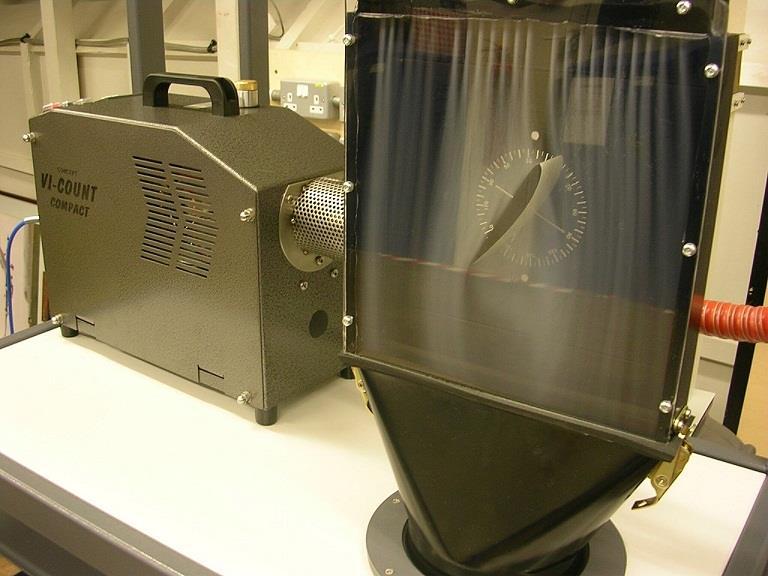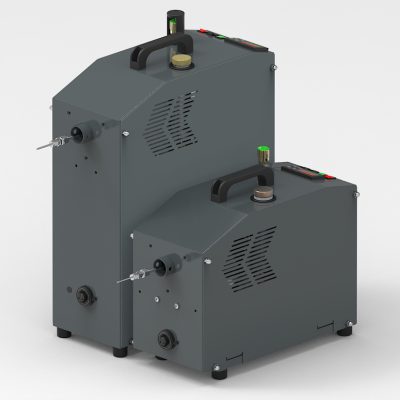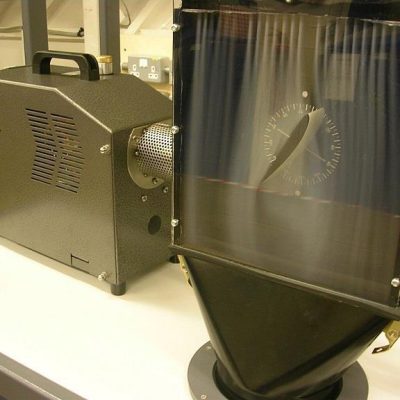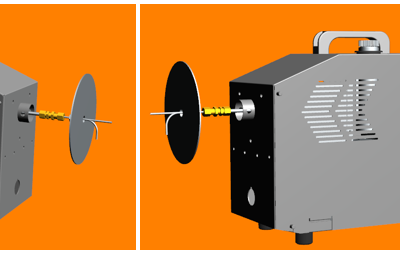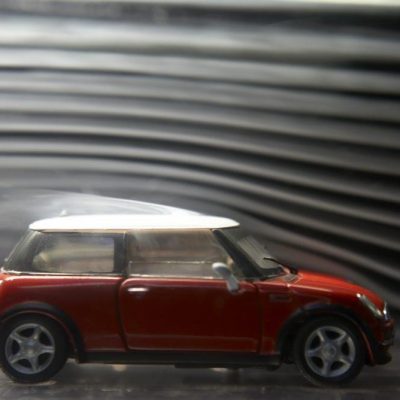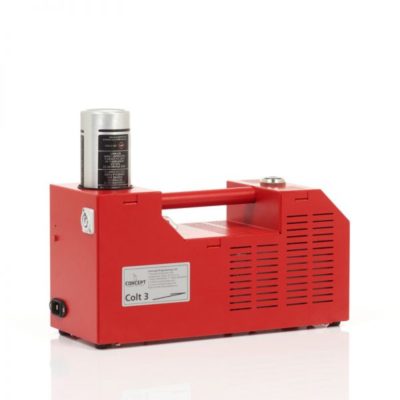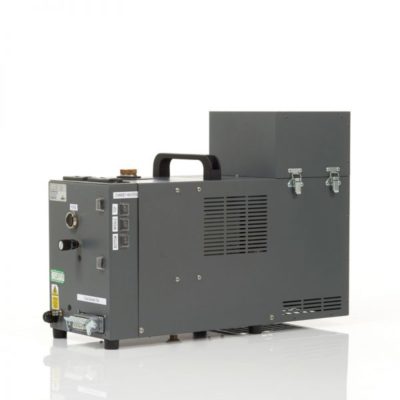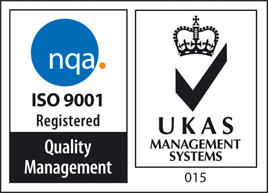Description
The ViCount WT is a specialist variant of Concept’s proven ViCount smoke generator, purpose-built for wind tunnel work and advanced aerodynamic studies. Designed to produce a dense, aerosol with uniform particle size distribution, the ViCount WT excels in both qualitative and quantitative flow visualisation applications. Its output is perfectly suited for cutting-edge techniques such as Particle Image Velocimetry (PIV) and Laser Doppler Velocimetry (LDV), where consistent particle behaviour and optical clarity are critical. The system’s refined control, minimal residue output, and robust build make it ideal for research institutions, universities, and test labs conducting airflow diagnostics, turbulence modelling, or boundary layer investigations. Whether used in subsonic or transonic wind tunnels, the ViCount WT delivers reliable, high-contrast smoke streams tailored for precision imaging and repeatable test conditions.
The ViCount WT is built to meet the demanding needs of both academic institutions and aerospace testing facilities. It offers an exceptionally versatile platform for aerosol-based flow visualisation, including advanced techniques such as Particle Image Velocimetry (PIV) and Laser Doppler Velocimetry (LDV).
What sets the ViCount WT apart is its modular, configurable design, allowing it to be tailored to an incredibly wide range of customer-specific requirements. Whether you’re working with confined model-scale setups or large-scale open-jet wind tunnels, the ViCount WT can be adapted to meet your performance and integration needs without compromise.
Optional features include:
Extended Nozzle Assemblies
Our optional extended nozzles allow the smoke to be introduced directly into the test section while keeping the ViCount WT unit outside the wind tunnel chamber. This setup offers several advantages:
- Simplifies control and access to the smoke generator during operation
- Prevents the unit from being submerged in smoke, reducing residue buildup and contamination
- Ideal for installations where bulkhead fittings or remote injection ports are required
High-Pressure Variants (Up to 280 PSI)
Wind tunnels operating under pressurised conditions require smoke systems that can overcome chamber pressure. The ViCount WT is available in high-pressure configurations, rated up to 280 PSI, allowing effective smoke output even in positive pressure environments.
- Standard configuration: Rated to 140 PSI
- High-output model (2.2 kW): Achieves up to ~850 mg/sec smoke output at 80 PSI (atmospheric)
- Custom configurations: Designed to match tunnel pressure differentials
Example: If your wind tunnel operates at 100 PSI, and the ViCount WT runs at 180 PSI, the effective differential remains 80 PSI, ensuring full smoke output.
Operating pressure guide:
| Tunnel Pressure | Seeder Pressure | Effective Output Pressure |
| 30 PSI | 30 PSI | 0 PSI (no smoke output) |
| 40 PSI | 50 PSI | 10 PSI |
| 60 PSI | 90 PSI | 30 PSI |
Instant Smoke On/Off Capability
Precise control over smoke output is critical for synchronised experiments. The ViCount WT can be fitted with a manual override valve to enable instantaneous smoke on/off functionality. This bypasses the standard automatic purge cycle for real-time control.
- Great for PIV setups requiring timed smoke bursts
- Reduces waste and allows accurate test repeatability
See Normal Operation
See Instant On/Off Feature
Adjustable Particle Size & Output Control
The ViCount WT allows operators to fine-tune aerosol properties to suit different optical or flow conditions:
- Gas Pressure Control
Choose between:
- A manual regulator for simple adjustments
- A digital electronic gas regulator for precise, repeatable pressure control
- Smoke Density / Particle Size
- Standard systems are factory-optimised for general use
- Optional micrometre valve allows manual adjustment of particle size, offering more control for specific test conditions
Watch Particle Size Adjustment Demo
Concept’s engineering team works closely with each customer to deliver tailored solutions.
Technical Specification:
| General Specification (approx) | ViCount WT 1300 | ViCount WT 5000 |
| Size (cm) | 41 x 18 x 37 | 41 x 18 x 54 |
| Weight (kg) | 12 | 17 |
| Power Supply | 230v, 50hz | 230v, 50hz |
| Optional | 110v, 50/60hz | 110v, 50/60hz |
| Warm up time from cold (mins) | 4 | 4 |
| Particle Size (micron, mass median diameter) | 0.2-0.3 | 0.2-0.3 |
| Standard Variant (1.1kw) | ||
| Heat Exchanger wattage (W) | 1100 | 1100 |
| Running time at maximum output (min) | 40 | 145 |
| Aerosol Output ( µg/sec ) | 0-466,000 | 0-466,000 |
| Hi-output Variant (2.2kw) | ||
| Heat Exchanger wattage (W) | 2200 | 2200 |
| Running time at maximum output (min) | 22 | 85 |
| Aerosol Output 2.2kw ( µg/sec ) | 0-850,000 | 0-850,000 |
Application Overview – PIV / LDV in Wind Tunnel Studies:
Particle Image Velocimetry (PIV) and Laser Doppler Velocimetry (LDV) are advanced optical measurement techniques used in wind tunnel testing to capture detailed, non-intrusive data on airflow characteristics. These methods are critical for understanding flow dynamics around aerodynamic surfaces, validating computational fluid dynamics (CFD) models, and optimising the design of vehicles, aircraft, and structural components.
Why Smoke / Aerosol Generators Are Used:
To perform PIV or LDV measurements, the airflow must be seeded with tracer particles that accurately follow the motion of the fluid. Smoke or aerosol generators are used to introduce a fine mist of particles into the airstream. These particles:
- Act as flow markers, scattering light from lasers used in PIV and LDV setups.
- Must be uniform in size (typically sub-micron to a few microns) to ensure reliable tracking of fluid motion without lag.
- Remain suspended in the flow long enough to be captured by imaging systems.
- Should not contaminate the test environment or interfere with measurement accuracy.
In PIV, pairs of laser-illuminated images are captured in rapid succession to calculate velocity vectors across a plane of flow. In LDV, the Doppler shift in laser light scattered by individual particles is measured to determine pointwise flow velocity.
The effectiveness of both techniques depends heavily on the quality and consistency of the seeding particles. Therefore, the choice of smoke or aerosol generator is critical — the system must deliver stable output, fine particle sizes, and compatibility with optical systems without introducing turbulence or contamination.
Case Studies:
The ViCount WT smoke generator is widely recognised as a benchmark for flow visualisation in wind tunnel testing, with proven use in some of the world’s most advanced aerospace facilities. Engineered for precision, consistency, and ease of integration, the ViCount WT has been successfully deployed in both academic and industrial research settings to support cutting-edge techniques such as Particle Image Velocimetry (PIV) and Laser Doppler Velocimetry (LDV).
Recent NASA research (SciTech24 PIV Report) highlights the critical importance of uniform, stable particle seeding in obtaining reliable velocity field data across large-scale wind tunnel environments. The ViCount WT delivers exactly that—producing a dense, oil-based aerosol with a highly consistent sub-micron particle size distribution ideal for laser-based imaging. This allows for sharp, high-contrast visualisation without introducing turbulence or contamination.
In further NASA trials focused on seeder performance (Seeder Upgrade Report), the ViCount WT stands out for its ability to generate optically responsive, long-dwell particles—a significant improvement over legacy fogging systems that often struggle with uneven output or high fluid consumption. Researchers note its exceptional performance in delivering smooth, uniform seeding across large test sections, supporting both qualitative flow studies and quantitative measurement techniques.
Academic studies, such as those from the University of Queensland (AFMC 2020, Paper 54), further validate the importance of high-quality seeding for time-resolved flow diagnostics. The ViCount WT has proven particularly effective in applications requiring repeatable and disturbance-free flow conditions, including boundary layer analysis and wake structure investigations.
With a track record of success in institutions around the world, the ViCount WT has become the go-to solution for:
- PIV and LDV seeding in subsonic wind tunnels
- Large test section seeding with minimal residue
- Aerospace component and vehicle aerodynamics
- Academic research and CFD validation studies
Whether you’re conducting fundamental fluid mechanics research or high-fidelity aero testing, the ViCount WT delivers clean, reliable, and professional-grade seeding performance—every time.
Users include:
- NASA Glenn Research Centre
- Sandia National Laboratories
- University of Nottingham
- NASA Langley Research Centre
- Middle East Technical University
- Perth College UHI
- Unidade de Serviços Financeiro e Patrimonial
- Edith Cowan University
- The University of Toledo
- University of Cincinnati
- PerkinElmer
- Geotechnical Engineering and Geosciences Branch US Army
- University of Glasgow
- Maurice J. Zucrow Laboratories
- Indian Institute of Science (IISc)
- University of Canterbury
- CSIR-National Aerospace Laboratories
- Centro de Tecnologías Aeronáuticas
